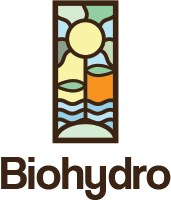pH Balance and Plants in Hydroponics

There’s a lot of talk about pH and your garden. Your local hydro store offers an array of test kits and gear to measure, adjust and control the pH of our reservoirs. But what is pH?
In the simplest terms, pH is how acidic or alkaline the water in your reservoir is. It is measured on a scale of 1-14, 1 being the most acidic and 14 being the most alkaline. pH is important to your plants’ ability to uptake the nutrients essential to health and productivity. Having a reservoir with a pH that is too high or too low will block your plants’ ability to absorb the nutrients necessary for growth, which leads to DEAD plants.☹
There are 17 nutrients that play a role in overall plant health and are essential for optimal yields. I recommend keeping the pH of your reservoir water between 5.5 and 6.5, or even better, between 5.8 and 6.3. Why, you ask? Here’s a chart:

hydroponically grown saffron
If you look at the chart you’ll see that the ideal pH is about 6.2, however some gardeners like to let their pH flex a little because not all nutrients are absorbed at the same pH.
Another factor to consider is the type of growing medium in your garden. Rockwool, perlite, recycled glass, and clay pebbles all have a high pH based on their natural composition. To deal with the higher pH levels in these substrates, growers often adjust their nutrient solutions down to a pH of 5.5. Coco coir, which is becoming one of the most popular types of growing media, has a pH level of approximately 6.3. Due to coir’s optimal pH level, nutrient solutions can be applied at the standard ideal range of 5.8 to 6.3. For NFT, DWC, RDWC and aeroponics, very little growing media is used. In these types of hydro systems, roots are growing right in the nutrient solution, and most growers target a pH of 5.8.
If you find that the pH of your nutrient solution drifts upward, adjust it down to 5.5. Don’t adjust it again until it reaches 6.5 or higher.
What we want to keep in mind is that pH is essential for healthy plants, and even the slightest dip in pH levels, such as a drop down to 5.0, can have a negative effect on your plants. Checking the chart again, you’ll see that a 5.0 reading will limit the availability of the top nutrients, whereas a slight rise to 7.5 will have the same effect on all of the lower essential nutrients. This is what is called a ‘nutrient lockout.’
These days there are nutrients available with pH buffers built into them, created to keep your reservoir in the optimal range, but they’re not foolproof. Checking the pH of your reservoir should be habitual, especially if you are changing your nutrient solution. Your local hydro store can advise you and supply you with pH adjusting products, which are affordable and a good idea to have on hand at all times. As I always say, an involved gardener is a successful gardener.###

